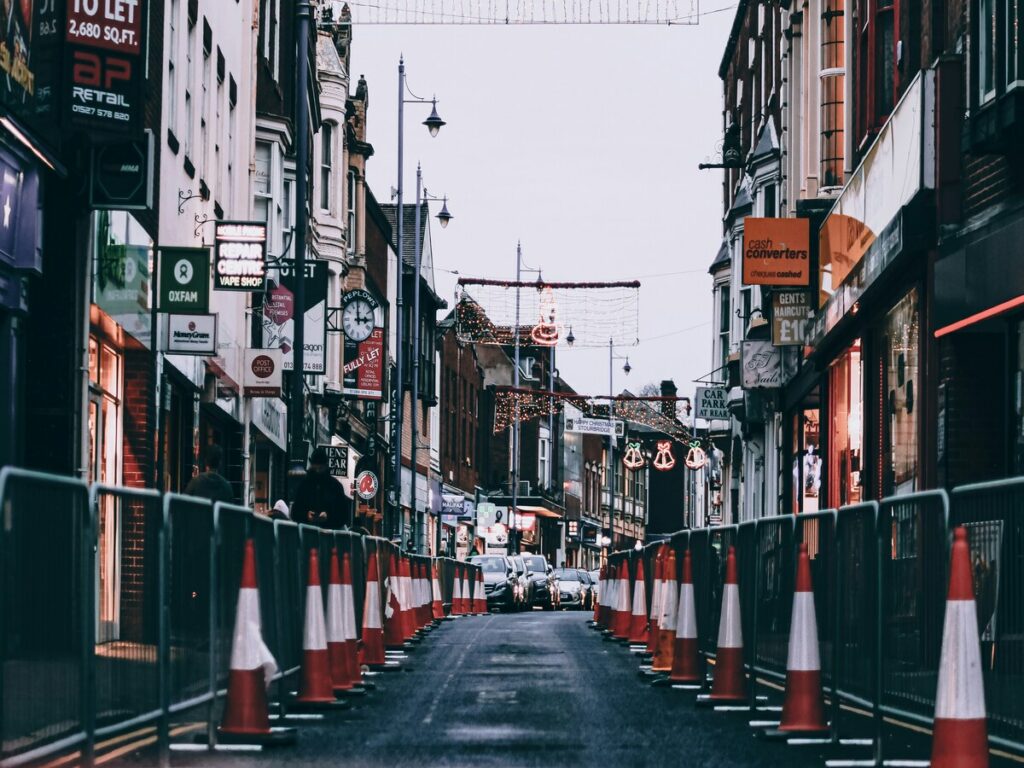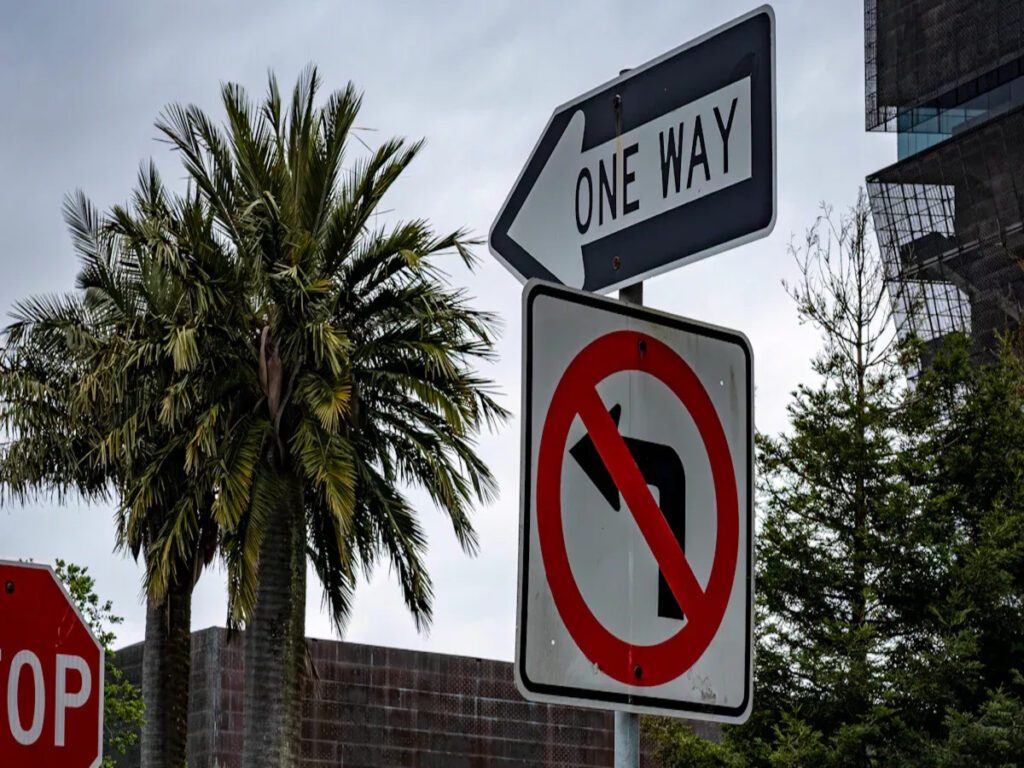
الأقماع المرورية أدوات حيوية في الحفاظ على السلامة على الطرق, توجيه المركبات, وحماية العمال في مناطق البناء أو المناطق التي تتغير أنماط حركة المرور. لكن, لا يتم إنشاء كل مخاريط حركة المرور على قدم المساواة. لكي يكونوا فعالين وآمنين, يجب أن يلتزموا ببعض معايير السلامة. في هذه المدونة, سوف نستكشف معايير السلامة لأقماع المرور, التركيز على دليل على أجهزة مراقبة حركة المرور الموحدة (Mutcd) في الولايات المتحدة و AS/NZS 1906.1:2017 في أستراليا ونيوزيلندا. تضمن هذه المعايير أن تفي المخاريط المرورية بالوضوح اللازم, متانة, ومتطلبات السلامة في حالات المرور المختلفة.
Mutcd: دليل على أجهزة مراقبة حركة المرور الموحدة (الولايات المتحدة)
ال Mutcd يوفر إرشادات لأجهزة التحكم في حركة المرور, بما في ذلك الأقماع المرورية, المستخدمة في جميع أنحاء الولايات المتحدة. تضمن هذه الإرشادات فعالية الأقماع المرورية في توجيه حركة المرور, حماية العمال, والتقليل من الحوادث في مناطق العمل, الالتفاف, وغيرها من المناطق التي تشهد تغيرات مرورية.
قسم MUTCD 6F.63: المخاريط المرورية
ال Mutcd الخطوط العريضة لتصميم وتطبيق الأقماع المرورية, مع التركيز على فاعليتها في توجيه ومراقبة التدفق المروري. يجب أن تفي المخاريط بمتطلبات الرؤية والحجم المحددة لتكون فعالة في سيناريوهات إدارة حركة المرور.
الحجم والرؤية
متطلبات الارتفاع: يجب أن تكون الأقماع المرورية المستخدمة في مناطق العمل أو على طول الطرق على الأقل 28 بوصة (710 مم) طويل. يضمن هذا الارتفاع رؤية الأقماع المرورية من مسافة آمنة, السماح للسائقين بالوقت الكافي للرد. في بعض الحالات, يمكن استخدام المخاريط الأصغر حجمًا في المناطق ذات سرعات المرور المنخفضة أو في المناطق المخصصة للمشاة فقط.
OPTsigns تقدم مخاريط السلامة بأحجام مختلفة. لسيناريوهات البناء, يرجى اختيار 900خيارات الارتفاع مم.
أغطية عاكسة: يجب أن يكون لديك الأقماع المرورية الأغطية العاكسة مما يسمح لهم بعكس الضوء إلى مصدره, مما يجعلها مرئية في ظروف الإضاءة المنخفضة, مثل الليل أو الضباب. يجب أن تستوفي الأغطية معايير انعكاسية محددة, ضمان الرؤية الكافية من مسافة لا تقل عن ذلك 500 قدم (150 متر).
لون: لون الأقماع المرورية هو عادة البرتقالي, لكن البرتقال الفلورسنت غالبًا ما تستخدم المخاريط في ساعات النهار للحصول على رؤية أعلى, خاصة في البيئات الخارجية المشرقة.
التنسيب والتباعد
يعد التباعد والوضع المناسب أمرًا بالغ الأهمية لكي تعمل الأقماع المرورية بشكل فعال. يعتمد التباعد عادةً على سرعة حركة المرور, نوع منطقة العمل, وتعقيد أنماط حركة المرور. على العموم, يجب أن يكون التباعد بين المخاريط 10 و 50 قدم (3 ل 15 متر) منفصل.
في المناطق ذات السرعة العالية (مثل الطرق السريعة), يجب وضع المخاريط بالقرب من بعضها البعض لتنبيه السائقين مسبقًا. للمناطق ذات السرعة المنخفضة, يمكن أن تكون المخاريط متباعدة عن بعضها البعض, ولكن الهدف هو إنشاء مسار واضح دائمًا لحركة المرور وضمان السلامة للعاملين على الطريق.
متطلبات الانعكاس
مطلوب استخدام الأقماع المرورية النوع الأول, الثاني, أو III الأغطية العاكسة التي تلبي المعايير المطلوبة للانعكاس. وهذا يضمن أن المخاريط مرئية في ظل ظروف مختلفة, بما في ذلك في الليل, في الطقس الممطر, أو في البيئات منخفضة الإضاءة.

مثال في العالم الحقيقي: استخدام المخروط المروري في مناطق البناء الحضرية
في منطقة بناء المدينة, حيث تحدث أعمال الطرق بشكل متكرر في الشوارع ذات حركة المرور العالية, غالبًا ما تعمل مخاريط البناء على تحويل المركبات بعيدًا عن مواقع البناء وحماية المشاة والعمال. وفقًا لإرشادات MUTCD, مكان المخاريط 10 أقدام متباعدة في مناطق البناء الحضرية هذه إذا كانت سرعة الطريق 25 ميلا في الساعة أو أقل, إذا كانت منطقة البناء على طريق سريع أو في منطقة عالية السرعة, قد يقل التباعد إلى 5 قدم, ويجب أن تكون مخاريط البناء كذلك البرتقال الفلورسنت لزيادة ظهورهم.
بالإضافة إلى ذلك, تعد الأغطية العاكسة أمرًا بالغ الأهمية في هذه الحالة حيث قد يعمل عمال البناء حتى وقت متأخر من المساء, وتساعد مخاريط البناء العاكسة السائقين على التنقل عبر المنطقة بأمان.
لمزيد من المعلومات حول مخاريط البناء التي تتوافق مع هذه المعايير, يزور OPTsigns.
AS/NZS 1906.1:2017 – مخاريط المرور على الطرق: المواد العاكسة
في أستراليا ونيوزيلندا, ال AS/NZS 1906.1:2017 يحكم هذا المعيار المواد العاكسة للضوء المستخدمة في أجهزة التحكم في حركة المرور, بما في ذلك الأقماع المرورية. يضمن هذا المعيار أن الأقماع المرورية في هذه المناطق تلبي متطلبات الرؤية والمتانة المحددة للتعامل مع الظروف البيئية المختلفة, بما في ذلك التعرض للأشعة فوق البنفسجية, مطر, ودرجات الحرارة القصوى.
AS/NZS 1906.1:2017: المواد العاكسة للأقماع المرورية
ال AS/NZS 1906.1:2017 يحدد المعيار جودة وأداء المواد العاكسة المستخدمة في أجهزة التحكم في حركة المرور, بما في ذلك الأقماع المرورية, ضمان بقائها مرئية مع مرور الوقت.
معايير الانعكاسية
الحد الأدنى من الانعكاسية: يجب أن تفي مخاريط الممرات المرورية في أستراليا ونيوزيلندا بالمواصفات المحددة إعادة الانفعال المعايير للتأكد من أنها مرئية, خاصة في الليل أو في الظروف الضبابية. يجب أن تتمتع المواد العاكسة بمعامل عالٍ من النصوع المنعكس, مما يعني أنها تعيد الضوء إلى مصدره بكفاءة أكبر من المواد القياسية.
التصنيف الانعكاسي: يتم تصنيف المواد العاكسة المستخدمة في المخاريط إلى: فصل 1 أو فصل 2 على أساس خصائصها العاكسة. فصل 1 يناسب المناطق ذات حركة المرور المنخفضة أو البيئات غير السريعة, بينما الطبقة 2 أو تعمل الدرجات الأعلى بشكل أفضل في حركة المرور العالية, بيئات سريعة الحركة.
المتانة والأداء
مقاومة الطقس: يجب أن تكون المخاريط قادرة على الصمود الظروف الجوية القاسية, مثل الأشعة فوق البنفسجية, مطر, والرطوبة. متأخر , بعد فوات الوقت, يجب أن تحافظ المواد العاكسة على أدائها ووضوح رؤيتها, ضمان فعالية طويلة الأجل, حتى في المناخات الأسترالية والنيوزيلندية القاسية.
أداء طويل الأمد: يجب أن تحتفظ المواد المستخدمة في الأقماع المرورية بخصائصها العاكسة طوال عمرها الافتراضي, ضمان بقاء المخاريط مرئية وموثوقة للاستخدام في مناطق التحكم في حركة المرور المؤقتة والطويلة الأجل.
الارتفاع والحجم
في أستراليا ونيوزيلندا, يجب أن تكون مخاريط المرور للممرات بشكل عام 700 مم (28 بوصة) في الارتفاع أو أطول لضمان الرؤية المثلى في مناطق المرور. يساعد الحجم الأكبر على ضمان رؤية مخاريط المرور الكبيرة من مسافة أكبر, خاصة في المناطق ذات حركة المرور الكثيفة أو الإضاءة المحدودة.
في OPTsigns, نحن نقدم القياسية 700ملم مخاريط السلامة, إلى جانب 28 مخاريط أمان بوصة لاحتياجاتك

مثال في العالم الحقيقي: استخدام مخروط المرور في أعمال الطرق الأسترالية
في أستراليا, يستخدم العمال عادةً مخاريط الطرق السريعة على الطرق السريعة المزدحمة أثناء مشاريع صيانة الطرق. على سبيل المثال, خلال مشاريع إعادة رصف الطرق على الطريق السريع, تقوم أطقم العمل بوضع الأقماع المرورية بشكل استراتيجي لتحويل حركة المرور ومنع الوصول إلى الممرات المغلقة. يجب أن تكون مخاريط السلامة هذه فصل 2 أو أعلى لزيادة الرؤية, خاصة عندما تتم أعمال الطرق خلال ساعات الرؤية المنخفضة, مثل عند الغسق أو في المطر الغزير.
ال البرتقال الفلورسنت لون مخاريط السلامة, إلى جانب الأغطية العاكسة, يضمن أن السائقين يمكنهم رؤية المخاريط بوضوح وضبط سرعتهم ومواضع المسار وفقًا لذلك.
الاختلافات الرئيسية بين MUTCD وAS/NZS 1906.1:2017
التشابه في المعايير
- أغطية عاكسة: يؤكد كلا المعيارين على أهمية الاستخدام الأغطية العاكسة للتأكد من أن الأقماع المرورية مرئية, خاصة في الليل أو في ظروف الرؤية السيئة.
- متطلبات اللون: كل من MUTCD وAS/NZS 1906.1:2017 تتطلب أن تكون الأقماع المرورية برتقالية, مع اللون البرتقالي الفلوريسنت الموصى به لتحسين الرؤية أثناء النهار.
- الحجم والارتفاع: يوصي كلا المعيارين بأن تكون الأقماع المرورية على الأقل 28 بوصة (710 مم) في الارتفاع لضمان الرؤية على الطريق.
الاختلافات الرئيسية
- الاختلافات الإقليمية: ينطبق MUTCD على وجه التحديد على الولايات المتحدة, بينما AS/NZS 1906.1:2017 يتم استخدام المعيار في أستراليا ونيوزيلندا. تعكس هذه المعايير ممارسات ولوائح إدارة المرور الخاصة بكل منطقة.
- تصنيفات الانعكاسية: يتطرق معيار AS/NZS إلى مزيد من التفاصيل بخصوص التصنيفات الانعكاسية, بينما يوفر MUTCD إرشادات أوسع دون تحديد فئات مفصلة للانعكاس الرجعي.
للحصول على مخاريط مرورية ومواد عاكسة عالية الجودة تلبي كلاً من MUTCD وAS/NZS 1906.1:2017 المعايير, استكشف مجموعة المنتجات على OPTsigns.
يعد فهم معايير السلامة الخاصة بمخاريط الممرات أمرًا ضروريًا لضمان فعاليتها وموثوقيتها في سيناريوهات التحكم في حركة المرور المختلفة. كلاهما Mutcd في الولايات المتحدة و AS/NZS 1906.1:2017 توفر المعايير القياسية في أستراليا ونيوزيلندا إرشادات واضحة للاستخدام السليم لأقماع الممرات, التركيز على الرؤية, الانعكاس, مقاس, و متانة. من خلال الالتزام بهذه المعايير, يمكن لمحترفي إدارة حركة المرور التأكد من أن مخاريط الممرات ليست آمنة ومرئية فحسب، بل أيضًا طويلة الأمد ومتوافقة مع المتطلبات التنظيمية.

















